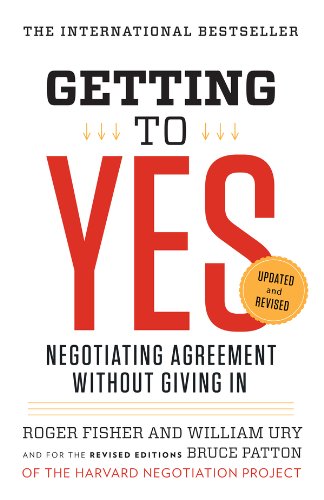

This article is an excerpt from the Shortform summary of "Getting to Yes" by Roger Fisher and William Ury. Shortform has the world's best summaries of books you should be reading.
Like this article? Sign up for a free trial here .
What are objective criteria? And why should you use them in negotiation?
Objective criteria are independent standards used in negotiation that are factual and therefore fair to both sides. We’ll cover how to develop and negotiate with objective criteria.
Insist on Objective Criteria
Standard negotiations are a battle of wills. For instance, with a labor contract, the prevailing side determines the level of pay increases and benefits, based on their view of what’s appropriate. The agreement won’t be efficiently arrived at and it won’t be civil because one side has to back down. It’s also unlikely to be a wise agreement (encompassing the interests of both sides).
A better alternative is to negotiate an agreement measured against objective criteria, independent of the will of either side.
Why Use Objective Criteria?
When you use objective criteria, such as market value or average salaries, you’re basing the agreement on principle instead of succumbing to pressure tactics or threats to use an arbitrary standard chosen by the other side.
Principled negotiation using objective criteria is more likely to produce a fair and balanced agreement efficiently and civilly. Objective criteria support the three requirements for a successful negotiation:
- Fairness: Objective criteria relying on precedent, scientific merit, and community practices strengthen the agreement — it’s less vulnerable to attack and both sides are likely to ensure smooth implementation.
- Efficiency: The negotiation process is more efficient and less adversarial when the two sides focus on standards and solutions, rather than on forcing their position on the other side.
- A better working relationship: Having avoided a battle for dominance, the two sides are more likely to work cooperatively together in the future.
When a large number of parties is involved, having independent standards is especially important because positional bargaining by many sides gets extremely complicated.
How to Develop Objective Criteria
Before negotiations begin, start thinking about possible independent, objective criteria to use, and how you would apply them (fair standards and fair procedures). Often there are multiple objective criteria for your situation. Possible standards include: professional standards, precedent, tradition, moral standards, market value, scientific studies and data, depreciation tables, average salaries, cost of living, and comparable contracts.
Objective criteria are:
- Independent of either side’s position.
- Applicable to both sides.
- Practical and credible.
Besides having fair standards, you must use fair procedures in applying them. The old childhood rule for dividing a cake (one cuts, the other chooses) is one example. A modified version would be for the parties to negotiate what they think is a fair agreement before deciding who will get what.
Other fair procedures include: taking turns, drawing straws, flipping a coin, or letting someone else decide. The point is that each side has equal opportunity under the procedure. For instance, heirs could take turns selecting items they want from a family estate.
In many disputes it’s common to turn to a third party for help: you could submit the dispute to binding arbitration, hire a mediator, or submit a question to an expert.
How to Negotiate with Objective Criteria
When using objective criteria, you should be firm but reasonable. Follow these guidelines:
- With each issue you discuss, consider objective criteria. Agree first on the standards to apply (the principles). You’ll be more persuasive if you can make your case using criteria the other side suggested. When someone gives you a position (such as a price) ask for the theory behind it; how did the person come up with the price? Act as though the other person also wants a result based on objective criteria.
- Be reasonable and open. Insisting that an agreement be based on objective criteria doesn’t give you the right to impose your criteria. Other standards may be equally valid and you should be open to exploring them or splitting the difference. For example, market value and depreciated cost may both be valid. Alternatively, both sides can agree on the standard most widely used or ask a third party to decide. Note: There’s a difference between seeking agreement on appropriate standards and using standards you select to support your position or try to force agreement. The first is principled and the second is positional negotiation.
- Don’t give in to pressure; stick to principle. Pressure may include threats, manipulation, or intransigence. In response, ask the other side for their reasoning and suggest objective standards. Change your position only for sound reasons. The other side may start arguing based on the objective criteria if that’s the only approach you respond to. If they still won’t move from an unacceptable position, however, you can walk away.
———End of Preview———

Like what you just read? Read the rest of the world's best summary of "Getting to Yes" at Shortform . Learn the book's critical concepts in 20 minutes or less .
Here's what you'll find in our full Getting to yes summary :
- Why the standard way of negotiating is completely wrong
- How to find outcomes that are wins for both sides
- How to protect yourself against aggressive negotiators






